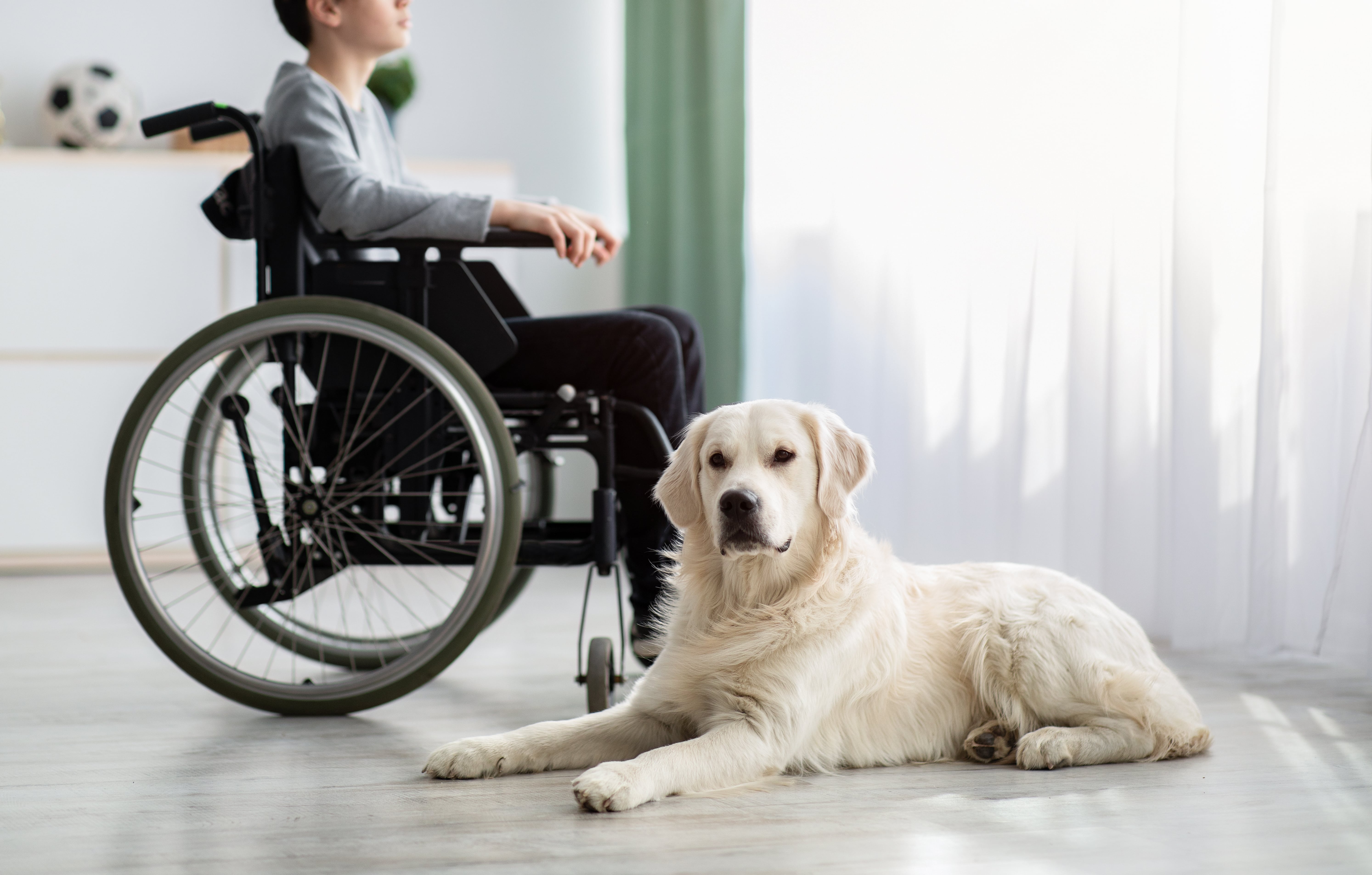
By Genni Burkhart Print & Go Guidance!
Companion animals fall into various legal classifications, some given more protections than others. Understand the differences between service, ESA, and therapy animals, and how to ethically and professionally handle those that could accompany patients to your dental practice.
For many individuals, the use of a skilled service animal allows them to perform the daily tasks of work and life in light of a disability.
Service dogs, the only legitimate service animals as defined under Title II and III of the Americans with Disabilities Act (ADA) are not pets; rather, they’re working assistants highly “trained to do work or perform tasks for people with disabilities.”
Service dogs assist those who suffer from sight, hearing, and mobility impairment, psychological disorders, autism, medical alert needs, epilepsy, diabetes, and more. These canine companions are highly trained to perform specific tasks directly related to their handler’s disability. However, they’re not the same thing as emotional support or therapy animals.
Let’s explore the defining differences between these cuddlesome colleagues, and how your practice can maintain professionalism and compassion towards patients with companion animals.
ADA Guidelines on Service Animals
Human beings are comprised of a diverse cornucopia of varying shades, shapes, sizes, and abilities—both physically and mentally. For those requiring the assistance of a service dog, this relationship has been shown to positively impact the health and happiness of not only that individual, but their entire family. Therefore, it comes as no surprise these animals are seen as an extension of the individual and given certain rights under the ADA.
Staff Tips on Service Dogs
- While a “No Pet Policy” is perfectly legal, it cannot apply to service animals. Titles II and III of the ADA clearly state that service animals are allowed in public facilities and accommodations.
- Tread lightly on the question you might feel compelled to ask regarding the extent or nature or of a patient’s disability. This extends to the need for a service animal. If the use of a service animal is obvious, such as a patient who has low vision abilities, don’t ask what the animal is used for. However, if you’re unaware of their disability it’s only then ok to ask the following questions: 1. Is the animal required because of a disability? 2. What work or task has the animal been trained to perform?
- Certificates or documentation on service animals cannot be requested, the animal cannot be asked to demonstrate tasks, and patients cannot be charged fees or surcharges for the animal.
- Discrimination against a specific breed of dog is prohibited, nor can requests to perform the duties of the dog be made in lieu of the dog’s presence for any reason. An example would be because the staff is allergic.
- In regards to staff or other patients with severe allergies, JADA advises using precautions in scheduling in order to minimize contact between “allergic or fearful staff/patients” and the service dog and its handler. JADA also states that any practice needing to make these accommodations can still honor the ADA Principals of Ethics and Code of Professional Conduct and remain compliant with the ADA so long as the patient with the disability isn’t isolated or treated unfairly.
- Service animals are working. Staff, visitors, and patients shouldn’t ask to pet or interact with the animal.
This list highlights some of the most important points regarding service animals. For additional information visit the ada.gov guidance on service animals or the US DHHS website on accommodating service animals in healthcare facilities.
Therapy and Emotional Support Animals (ESA)
Therapy animals and ESAs are different than their service animal counterparts. These companions provide emotional support for those who’ve experienced extreme trauma, stress or other psychological disorders. Your dental practice might even have its own therapy or ESA dog to welcome patients and soothe dental anxiety.
While guinea pigs to actual pigs, rats, cats and everything in between have earned their own classifications as ESAs, they don’t carry the identical legal protections as service dogs and may be excluded from your dental practice.

Staff Tips on ESA
- The ADA makes distinctions between service and ESA/therapy animals. Specifically, they state animals that solely provide “emotional support, well-being, comfort, or companionship” do not meet the same classification as service animals and can be denied access to public spaces.
- With the exception of air travel, ESA classified animals are not recognized under federal law and may be excluded from your office.
- In regards to therapy dogs, their use requires training, but they fall under the same legal guidelines as ESA animals and may be excluded from your office.
- It does not matter the type, breed, or kind of animal–dental offices are not mandated to allow ESA and therapy animals in their practice.
- Psychiatric service animals are considered service animals–not ESA animals, and are given the same access as other service dogs. The differentiating factor is that psychiatric service animals are trained to perform specific tasks directly related to that individual’s psychiatric disability; such as signaling a person with PTSD that a stranger is approaching from behind, avoiding a psychological trigger. The dog’s primary role isn’t to provide emotional support as an ESA animal would. A psychiatric service animal performs tasks that allow people with psychiatric disorders to navigate public space. Some patients with severe trauma histories may have psychiatric services animals rather than emotional support animals.
- If unsure of a dog’s companion status it’s acceptable to ask.
In Conclusion
While all companion animals have an important role to play in the safety and wellness of their owners, service dogs are the only companion animals given special rights and access under the ADA.
Be aware that companion animal laws can differ from state-to-state, so discuss specific concerns with a local attorney or, if you are a member, consult DOCS Regulatory Counsel. While federal laws regarding housing and transportation exist in regards to ESA animals, they don’t apply to medical facilities–such as your dental practice.
Even though therapy and ESA animals don’t have the same rights as service animals, having a clear understanding of laws and regulations for each classification will help your practice maintain professionalism and compassion for all patients who require the aid and assistance of companion animals.
Author: With over 10 years as a published journalist, editor, and writer Genni Burkhart’s career has spanned across politics, healthcare, law, business finance, and news. She resides on the western shores of the Puget Sound where she works as the Editor in Chief at DOCS Education out of Seattle, WA.




